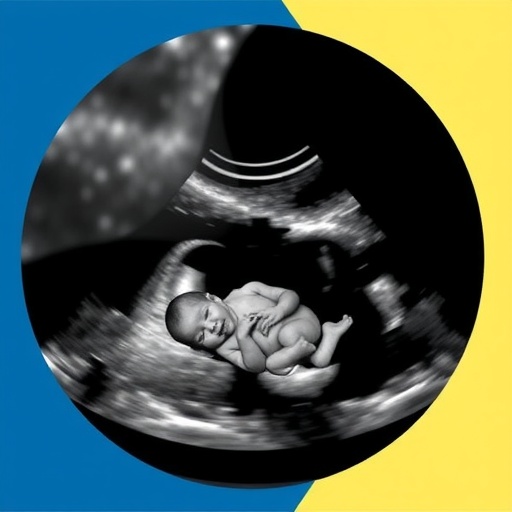
The landscape of neonatal care is evolving rapidly with the integration of innovative diagnostic technologies designed to enhance patient outcomes and streamline clinical workflows. One such breakthrough is the deployment of point-of-care ultrasound (POCUS) specifically tailored for neonatal units, a step that promises to revolutionize the immediacy and precision of neonatal imaging. As neonatal medicine demands the utmost care and precision, the selection and maintenance of ultrasound equipment designed to meet these unique needs have become paramount. This transformation is not merely technological but deeply logistical, requiring coordinated efforts at multiple institutional levels to ensure seamless adoption and optimal use.
Ultrasound machines dedicated to neonatal care must transcend traditional functionalities, accommodating the intricate and delicate profiling of newborns. They require a spectrum of probes, each adapted to specific imaging requirements, including phased array probes critical for cardiac imaging and high-frequency linear probes for detailed visualization of superficial structures. The tailored approach to equipment underscores the sensitivity and specificity required in neonatal diagnostics, where every scan can pivotally influence clinical decision-making.
The acquisition and archival of high-quality images stand at the core of an effective neonatal POCUS program. Institutions embarking on this journey must prioritize machines that support not only rapid, high-resolution image capture but also secure storage and easy retrieval within the hospital’s digital infrastructure. Integration with electronic medical records (EMRs) is essential to ensure that ultrasound findings are promptly documented and accessible to multidisciplinary care teams, thereby enhancing continuity of care and enabling robust quality assurance (QA) processes.
.adsslot_p8SYzMNtmP{width:728px !important;height:90px !important;}
@media(max-width:1199px){ .adsslot_p8SYzMNtmP{width:468px !important;height:60px !important;}
}
@media(max-width:767px){ .adsslot_p8SYzMNtmP{width:320px !important;height:50px !important;}
}
ADVERTISEMENT
Yet the implementation of POCUS in neonatal settings extends beyond the technology itself. It necessitates the establishment of comprehensive policies and protocols that define operational standards. Standardized protocols based on authoritative national and international guidelines are vital to ensure consistency in image acquisition and interpretation. Such protocols act as the backbone for training, accreditation, and continual professional development, fostering a culture of excellence and safety in neonatal ultrasound practice.
A crucial consideration during the adoption phase is the maintenance and servicing of ultrasound machines and their probes. The delicate nature of neonatal imaging devices, coupled with their frequent use in critical care settings, demands rigorous upkeep. Regular inspections and servicing aligned with manufacturer recommendations preserve device functionality and safeguard patient safety. Institutions must allocate resources and establish maintenance schedules that prevent equipment downtime and minimize the risk of diagnostic errors stemming from technical issues.
Workflow integration is another cornerstone of successful POCUS programs. Machines should be designed or selected to support fluid patient throughput, allowing clinicians to perform scans efficiently without disrupting care delivery. The ability to produce real-time electronic documentation and automatically archive images empowers clinicians with immediate access to diagnostic data while supporting retrospective analysis and peer review, which are instrumental in continuous quality improvement initiatives.
Infection control emerges as a non-negotiable priority when deploying ultrasound technology in neonatal care, where patients are particularly vulnerable. Contamination risks must be meticulously managed through stringent cleaning and disinfection protocols for machines, cables, and probes before and after each use. The adoption of single-use sterile gel sachets instead of conventional multi-use gel bottles exemplifies best practices in reducing microbiological hazards and preventing cross-contamination, which is critical in neonatal intensive care units (NICUs).
Importantly, the development and success of neonatal POCUS programs depend on collaborative, multidisciplinary input. Stakeholders including neonatologists, radiologists, nursing teams, biomedical engineers, and infection control experts must harmonize efforts. Such collaboration ensures that clinical needs are accurately translated into technological specifications and operational protocols, thereby optimizing equipment utilization and maximizing patient benefit.
Training and education form the linchpin of effective POCUS utilization. Clinicians must be proficient not only in operating ultrasound devices but also in interpreting complex neonatal images accurately. Structured training programs and competency assessments anchored in standardized guidelines promote confidence and competence among users. Furthermore, continuous education in evolving ultrasound technology and techniques supports sustained clinical excellence.
Beyond the technicalities of installation and operation lies the strategic aspect of integrating POCUS within broader neonatal care workflows. This includes defining image acquisition timing aligned with clinical decision points, establishing documentation pathways compatible with electronic health records, and ensuring that POCUS findings materially contribute to patient management plans. Such integration transforms ultrasound from a diagnostic adjunct to an integral, real-time clinical tool.
The role of quality assurance in neonatal POCUS cannot be overstated. Archiving stored images facilitates peer review and performance audits, which are essential for maintaining diagnostic accuracy and identifying areas for improvement. Institutions should develop QA frameworks that incorporate case reviews, feedback mechanisms, and performance metrics aligned with best practices, thereby fostering an environment of continuous learning and patient safety.
As neonatal ultrasound technology advances, future developments may include artificial intelligence-enhanced imaging and automated interpretation algorithms, potentially easing the cognitive burden on clinicians and improving diagnostic consistency. Early adoption of such innovations within a structured POCUS program would require careful evaluation and revised protocols to ensure alignment with clinical workflows and safety standards.
Financial and administrative considerations also influence the rollout of POCUS initiatives. Institutions must assess cost-effectiveness, balancing initial investment with anticipated clinical benefits and operational efficiencies. Grant programs, collaborative partnerships, and institutional commitment play critical roles in sustaining these advanced neonatal diagnostic capabilities over time.
Ultimately, the transformation of neonatal care through POCUS represents an intersection of cutting-edge technology, rigorous clinical protocol development, and meticulous operational integration. By addressing maintenance, workflow, protocol standardization, infection control, and training collectively, healthcare institutions can realize the full potential of point-of-care ultrasound to improve neonatal outcomes and redefine the standard of care.
In conclusion, implementing a dedicated neonatal POCUS program involves a multifaceted approach that intricately weaves together state-of-the-art ultrasound technology, explicit procedural guidelines, and continuous staff competence development. The strategic selection and upkeep of ultrasound equipment capable of meeting neonates’ unique anatomical and pathological imaging needs, combined with robust infection control and streamlined documentation workflows, lay the foundation for success. Such comprehensive programs promise to elevate neonatal care, providing clinicians with invaluable diagnostic tools precisely when and where they are most needed.
Subject of Research: Neonatal point-of-care ultrasound program development and integration in clinical settings
Article Title: Neonatal point-of-care ultrasound—steps for program development
Article References:
Bhombal, S., Singh, Y., Marshall, S. et al. Neonatal point-of-care ultrasound—steps for program development.
J Perinatol (2025). https://doi.org/10.1038/s41372-025-02359-1
Image Credits: AI Generated
DOI: https://doi.org/10.1038/s41372-025-02359-1
Keywords: neonatal care, point-of-care ultrasound, POCUS, ultrasound maintenance, neonatal imaging, infection control, clinical workflow, quality assurance
Tags: clinical decision-making in neonatal diagnosticscoordinated efforts in ultrasound adoptionhigh-resolution imaging in neonatal careimproving patient outcomes with ultrasoundinnovative diagnostic technologies in neonatal carelogistics of neonatal ultrasound programsneonatal imaging advancementsneonatal point-of-care ultrasoundPOCUS in neonatal medicinetailored ultrasound probes for infantsultrasound equipment for newbornsultrasound technology integration in healthcare





